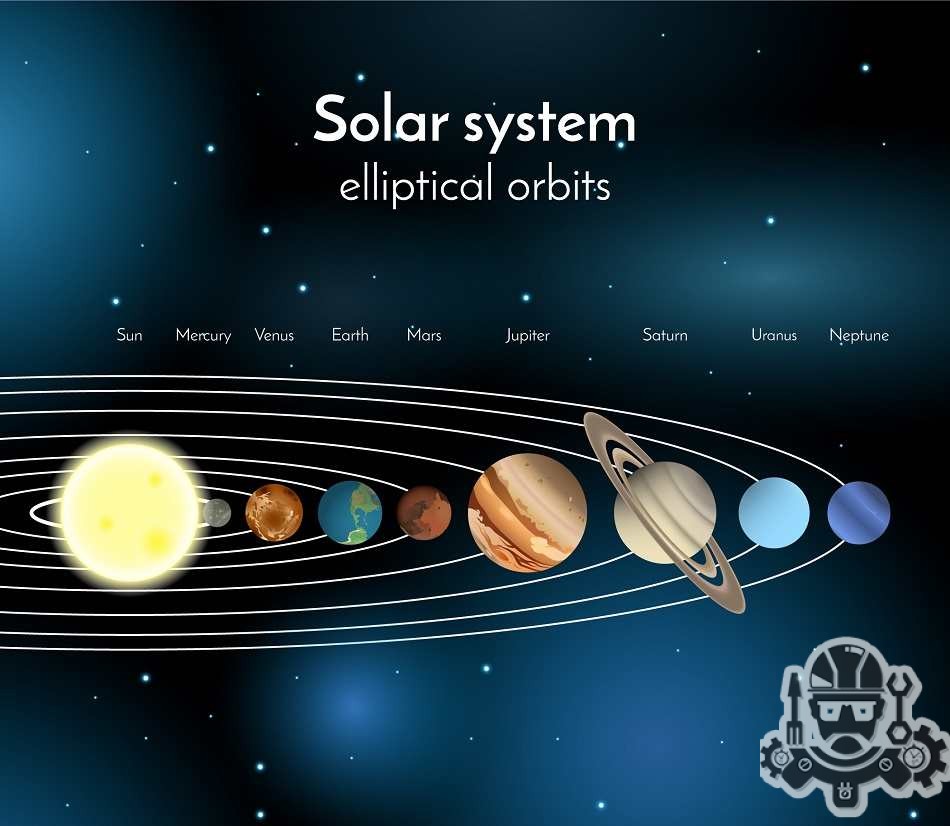The History Of Space Exploration

Space exploration has been a fascinating topic for humans for centuries. It is the study of outer space beyond Earth’s atmosphere and includes the exploration of planets, moons, comets, and asteroids. The history of space exploration dates back to ancient times, when humans looked up at the stars and wondered about the vast and mysterious universe beyond their reach.
The first recorded instance of humans reaching space was in 1961 when Yuri Gagarin became the first man to journey into the cosmos aboard the Vostok 1 spacecraft. This was followed by the first American astronaut, Alan Shepard, who made a suborbital flight in May of the same year. Since then, humans have made numerous trips to space, including the moon landing in 1969 by the Apollo 11 crew. The purpose of these missions has been to gain a better understanding of space and its impact on humans and the environment.
| Year | Mission | Crew |
|---|---|---|
| 1961 | Vostok 1 | Yuri Gagarin |
| 1969 | Apollo 11 | Neil Armstrong, Edwin “Buzz” Aldrin, Michael Collins |
| 1986 | Challenger Space Shuttle | Francis R. Scobee, Michael J. Smith, Ronald McNair, Ellison Onizuka, Judith Resnik, Gregory Jarvis and Christa McAuliffe |
Space exploration has brought numerous benefits to humankind, including advancements in technology and medical research. It has also helped us better understand our place in the universe and the impact of space on our environment. While the history of space exploration has been marked by triumphs and tragedies alike, the future of space exploration looks bright, with new missions planned to explore Mars and beyond.
Despite the challenges, space exploration remains an important endeavor for scientists and researchers around the world. It has pushed the limits of what we thought possible and will continue to inspire future generations to explore the final frontier of space.
Contents
- 1 The Components Of Our Solar System
- 2 The Mechanics Of Space Travel
- 3 The Search For Life Beyond Earth
- 4 The Benefits Of Space Exploration
- 5 Space Law And Governance
- 6 Privatization Of Space Exploration
- 7 Satellite Technology And Its Impact
- 8 The Future Of Space Tourism
- 9 The Role Of Space İn National Security
The Components Of Our Solar System

Our solar system is one of many in the Milky Way galaxy, and it consists of various components that play a critical role in the stability and composition of the system. From the central star to the outermost planet, each component has unique properties and characteristics that have fascinated astronomers for centuries.
At the center of the solar system is the Sun, a massive star that accounts for more than 99% of the system’s total mass. It is the source of energy for the planets and other objects in the system and provides the gravitational force that holds them in their respective orbits. The Sun is composed mostly of hydrogen and helium, which undergo nuclear fusion to produce heat and light.
| PLANETS | DWARF PLANETS | ASTEROID BELT |
|---|---|---|
| MERCURY | PLUTO | ASTERIOIDS |
| VENUS | CERES | VESTA |
| EARTH | MAKEMAKE | PALLAS |
| MARS | HAUMEA | HILDA |
| JUPITER | ERIS | JUNO |
| SATURN | DAVIDA | |
| URANUS | CALYPSO | |
| NEPTUNE | CONSENSUS |
The solar system also has eight planets and five dwarf planets that orbit the Sun. The four innermost planets, Mercury, Venus, Earth, and Mars, are known as the terrestrial planets, while the four outermost planets, Jupiter, Saturn, Uranus, and Neptune, are the gas giants. The dwarf planets, such as Pluto and Ceres, occupy the space between the planets and the Kuiper Belt, a region beyond the orbit of Neptune that is home to many icy objects. The asteroid belt, located between Mars and Jupiter, is a collection of small rocky objects that failed to form into a planet due to Jupiter’s massive gravitational pull.
The solar system also has moons that orbit the planets, asteroids, comets, and other small bodies that are remnants of the formation of the system. The components of the solar system interact with each other in various ways, such as through gravitational force, collisions, and heat transfer. Studying these interactions helps scientists understand the history and evolution of the solar system and how it compares to others in the galaxy.
The Mechanics Of Space Travel
Space travel has always fascinated humanity. From the first moon landing in 1969 to the recent SpaceX missions, people have been trying to understand the mechanics of space travel for decades. Space travel may seem like science fiction, but it’s a reality that requires a lot of knowledge and dedication to make it work.
The mechanics of space travel involve understanding the principles of rocket propulsion, trajectory, and navigation. These are all essential components that make space travel possible. Rocket propulsion is the force needed to launch a spacecraft into space. The rocket engine burns a mix of fuel and oxygen, creating thrust that moves the spacecraft forward, overcoming Earth’s gravitational pull. Trajectory refers to the path that the spacecraft takes while in orbit. It is important to calculate the right trajectory to ensure that the spacecraft reaches its intended destination. Navigation is crucial to knowing the spacecraft’s position and how it can get to where it’s going.
Another important aspect of the mechanics of space travel is the need for spacecraft to be self-sufficient. This means that the spacecraft must carry all the necessary resources for the journey since resupply missions are not possible. These resources include food, water, oxygen, and fuel. Additionally, spacecraft must have robust communication equipment to stay in contact with mission control on Earth.
| Component | Function |
|---|---|
| Rocket engine | Burns fuel and oxygen to create thrust to move the spacecraft forward |
| Trajectory | Calculates the path that the spacecraft will take while in orbit |
| Navigation system | Allows for the spacecraft to know its position and how to reach its intended destination |
| Self-sufficiency | Ensures that the spacecraft carries all necessary resources for the journey |
| Communication equipment | Allows for the spacecraft to stay in contact with mission control on Earth |
Overall, space travel requires a great deal of understanding and planning to make it successful. The mechanics of space travel are complex and require engineers and scientists to work together to make it possible. Despite the challenges, space travel has opened up new possibilities and discoveries that continue to captivate people’s imaginations and inspire the next generation of space explorers.
The Search For Life Beyond Earth
Are we alone in the universe? This is a question that has fascinated humans for centuries. With the advances in technology and space exploration, the search for life beyond Earth has become a major focus for scientists and researchers.
One of the major methods for detecting life beyond Earth is by searching for habitable environments. This involves looking for planets that are in the habitable zone of their star, where it is not too hot or too cold for liquid water to exist. The presence of liquid water is seen as a key indicator for the potential for life as we know it.
| Method | Description |
|---|---|
| Direct Imaging | Allows for the observation of exoplanets and their atmospheres through telescopes |
| Transit Method | Observing changes in a star’s brightness caused by a planet passing in front of it |
| Radial Velocity Method | Observing changes in a star’s spectrum caused by the gravitational pull of an orbiting planet |
| Gravitational Microlensing Method | Observing changes in the brightness of a star caused by the gravity of a planet passing in front of it |
While the search for exoplanets that are potentially habitable is ongoing, there are also efforts to look for signs of life beyond Earth through the study of biosignatures. Biosignatures are signatures of life that can be detected through remote sensing, such as the presence of oxygen or methane in a planet’s atmosphere.
As we continue to explore and learn more about our universe, the search for life beyond Earth will continue to be an important and exciting focus of scientific research and space exploration. Who knows what we may find?
The Benefits Of Space Exploration

The exploration of space has been a topic of great interest for decades. The benefits of space exploration are vast and extend far beyond the realm of science and technology. They impact our daily lives and have the potential to shape our future in countless ways. In this blog post, we will delve deeper into the benefits of space exploration and how they contribute to our world.
One of the most significant benefits of space exploration is the discovery and understanding of new technologies. Many of the technologies we use today have their roots in space exploration research. From GPS to satellite communications, space exploration has contributed to the development of these technologies by advancing our understanding of the universe and the technologies required to explore it.
Another benefit of space exploration is the impact it has on inspiring future generations. The exploration of space is a visible representation of what humans can achieve, and it serves as a reminder of the power of scientific discovery. Space exploration drives innovation, encourages critical thinking, and inspires youth to pursue careers in STEM-related fields.
| Benefits of Space Exploration | Description |
|---|---|
| Technological advancements | Space exploration has contributed to the development of many technological advancements we use today |
| Inspiration for future generations | Space exploration inspires youth to pursue careers in STEM-related fields and encourages innovation and critical thinking |
| Better understanding of Earth | Space exploration provides us with vital information about our planet, such as weather patterns, climate change, and natural disasters |
| Medical advancements | The study of space’s effects on the human body has led to new discoveries in medicine |
Space exploration also provides us with a better understanding of Earth and its place in the universe. By exploring our solar system, we gain powerful insights about our planet, including weather patterns, climate change, and natural disasters. This information is vital in developing strategies to mitigate the impact of these events and developing solutions to protect our planet.
Finally, space exploration has led to significant advancements in the field of medicine. Studies conducted in space help us better understand the effects of zero gravity on the human body, which can lead to new discoveries in medicine. These discoveries can lead to new treatments for diseases and improve our overall quality of life.
Overall, the benefits of space exploration are vast and far-reaching. From driving technological advancements to inspiring future generations, space exploration has had a significant impact on our world. The future of space exploration holds even more promise, and there is no doubt that continued exploration of the universe will continue to bring benefits that we cannot even imagine.
Space Law And Governance
Space law and governance are crucial components of space exploration and utilization. As humanity continues to advance in its exploration of space, the need for space law and governance becomes increasingly important. Space is a global commons, and as such, requires cooperation and collaboration from governments, organizations, and individuals around the world to ensure its responsible use and preservation.
Space law is the body of law that governs activities in outer space. It encompasses international treaties, agreements, and conventions, as well as domestic laws and regulations. The Outer Space Treaty of 1967 is the foundation of space law, which sets forth the principles governing the exploration and use of outer space. Other important treaties and agreements include the Rescue Agreement, the Liability Convention, and the Registration Convention.
| Principles of Space Law: | Description: |
|---|---|
| Peaceful Use: | Outer space should be used for peaceful purposes only. |
| Non-Appropriation: | Outer space and celestial bodies are not subject to national appropriation. |
| Free Access: | All states are free to explore and use outer space without discrimination. |
| Preservation of Resources: | States must use outer space responsibly and protect the space environment. |
Governance refers to the mechanisms and institutions that regulate space activities. As the number of countries and private companies involved in space exploration and utilization grows, there is a growing need for effective space governance. The United Nations Office for Outer Space Affairs (UNOOSA) is the primary global body responsible for promoting international cooperation and coordination in space activities. UNOOSA facilitates the peaceful and safe uses of outer space and helps to build capacity in developing countries to benefit from space technologies.
In conclusion, space law and governance are critical to ensuring the responsible and sustainable use of space. By promoting international cooperation and adhering to the principles of space law, humanity can continue to explore and utilize space for the benefit of all.
Privatization Of Space Exploration
The privatization of space exploration has been a topic of debate for decades. Since the inception of space exploration, it has been predominantly funded and controlled by national space agencies such as NASA. However, in recent years, private companies such as SpaceX, Blue Origin, and Virgin Galactic have made significant strides towards privatizing space exploration.
These private companies have been able to achieve groundbreaking advancements in space exploration due to their access to significant resources and funding. Unlike government-funded space agencies, private companies are not limited by bureaucratic red tape, which allows them to move faster in their endeavors. Furthermore, the increased competition between these private companies has led to a surge in innovation and technological advancements in space technology.
| Advantages of Privatization of Space Exploration | Disadvantages of Privatization of Space Exploration |
|---|---|
|
|
With the increasing success of private companies in space exploration, there has been a shift in the perception of how space exploration should be conducted. This has caused governments around the world to rethink their approach towards space exploration. Private companies have proven that they can achieve greater results in a shorter amount of time, and at a lower cost than government-funded space agencies.
However, the privatization of space exploration is not without its challenges. There are concerns that privatization may lead to a lack of regulation, which could compromise the safety of space exploration. The pursuit of profits may take precedence over scientific discoveries, and the loss of government control could have serious consequences. Therefore, it is critical that government oversight continues to play a significant role in space exploration – even if it means partnering with private companies for funding and expertise.
In conclusion, the privatization of space exploration has the potential to push the boundaries of human achievements. It has already led to significant advancements in space technology, lowered costs, and increased competition. However, it is essential to strike a balance between privatization and government control to ensure that space exploration continues to be conducted safely and for the benefit of all people.
Satellite Technology And Its Impact
Satellite technology has come a long way since the launch of Sputnik in 1957. Today, we rely on satellites for everything from television and radio broadcasts to GPS navigation and weather forecasts. As our dependence on satellite technology grows, so too does its impact on our daily lives.
One of the biggest impacts of satellite technology is its role in communication. Thanks to satellites, we can communicate with people all over the world instantly and effortlessly. This has revolutionized businesses, governments, and individuals alike, allowing us to collaborate and exchange information in real-time, no matter where we are.
Satellites are also essential for monitoring and mapping our planet. By taking high-resolution images of the Earth’s surface, scientists and researchers are better able to monitor weather patterns, track changes in land use, and even keep an eye on wildlife populations. This kind of data can be used to make important decisions about everything from national security to environmental policy.
| Satellite Technology Benefits | Satellite Technology Challenges |
|---|---|
|
|
Of course, satellite technology is not without its challenges. The cost of developing and launching satellites can be prohibitively high, and they are also vulnerable to interference and signal disruption. Additionally, satellite debris in orbit can pose a hazard to other satellites and space exploration efforts. As such, it’s important that we continue to invest in the development and improvement of satellite technology while also addressing the environmental concerns associated with its use.
Overall, satellite technology has had a significant impact on our world and will continue to do so for years to come. Its benefits, from instant communication to improved scientific research, are undeniable, but we must also be aware of the challenges and work to mitigate them as we move forward into a more interconnected and technology-driven future.
The Future Of Space Tourism
The future of space tourism looks very bright. As technology continues to advance and more private companies invest in space travel, it is becoming increasingly accessible to everyday people. Space tourism refers to the act of traveling to space as a recreational activity rather than for scientific purposes.
One of the most exciting developments in space tourism is the creation of space hotels. Several companies are currently working on building hotels in space that would allow visitors to experience life outside of Earth’s atmosphere. These space hotels would have all the amenities of a regular hotel, but with the added excitement of being in space.
| Benefits of space tourism: | Risks of space tourism: |
| 1) Increased public interest in space exploration | 1) The danger of space travel |
| 2) A boost to the economy through the creation of new jobs and industries | 2) The possibility of accidents |
| 3) Increased knowledge and research about space | 3) The impact on the environment |
While space tourism is an exciting prospect, it is not without its risks. Space travel is inherently dangerous and requires an incredible amount of preparation and care to ensure the safety of all passengers. There is also the risk of accidents or other mishaps, which could have disastrous consequences. Additionally, the environmental impact of space tourism is not yet fully understood.
Despite these risks, the future of space tourism is looking brighter than ever. As technology advances and costs come down, it is likely that more and more people will be able to experience the thrill of space travel. Whether it’s visiting a space hotel or taking a trip to a nearby planet, the possibilities are endless.
The Role Of Space İn National Security
The advancements made in space exploration not only benefit our scientific understanding of the universe but also have significant implications for national security. The role of space in national security has been a vital issue ever since the launch of the first artificial satellite, Sputnik 1, by the Soviet Union in 1957.
The use of satellites for communication, surveillance, and reconnaissance has become increasingly crucial to modern warfare. Satellites provide both military and intelligence agencies with a range of capabilities, from early warning systems to drone navigation and targeting. Without GPS, air and land defense systems would be less accurate and less effective.
The importance of space in national security is reflected in the budgets allocated by countries for their space programs. The United States Department of Defense allocates billions of dollars every year to maintain and improve their capabilities in space. Other spacefaring countries, including Russia and China, are also investing heavily in their national security space efforts.
| The Benefits of Space in National Security |
|---|
| 1. Communication |
| 2. Surveillance and Reconnaissance |
| 3. Early Warning Systems |
| 4. Navigation and Targeting |
| 5. Accurate Air and Land Defense Systems |
Given the growing importance of space in national security, the protection of space assets has become a critical issue. Countries are developing anti-satellite weapons that are capable of destroying enemy satellites. Space debris also poses an emerging threat to spacecraft and satellites in orbit.
As countries continue to explore and develop the potential of space, the role of space in national security will only become more significant. Space is not just a tool for scientific exploration, but also an important tool for protecting national interests and ensuring the safety of citizens and military forces.



